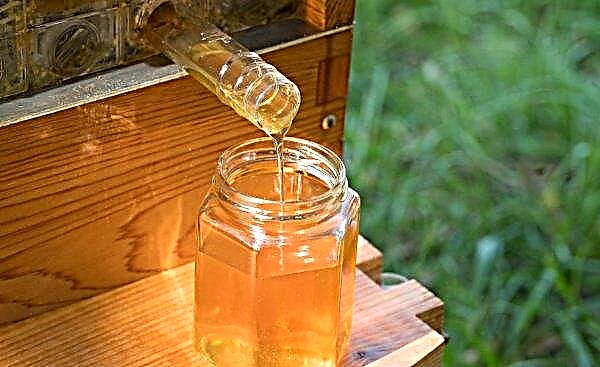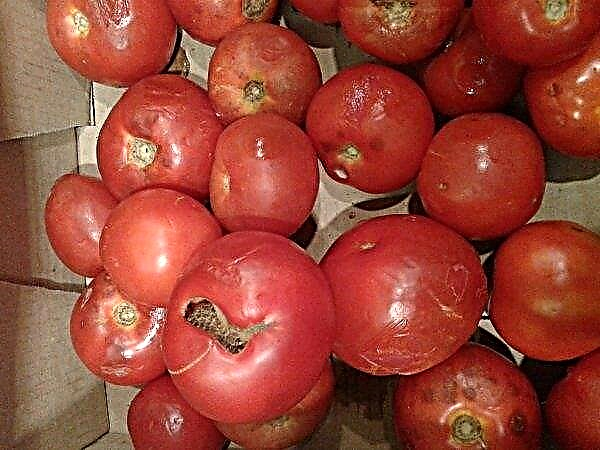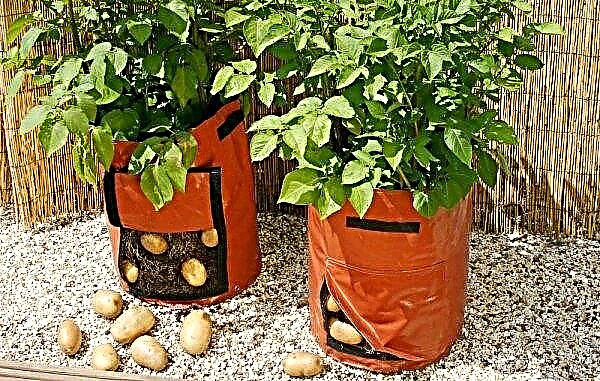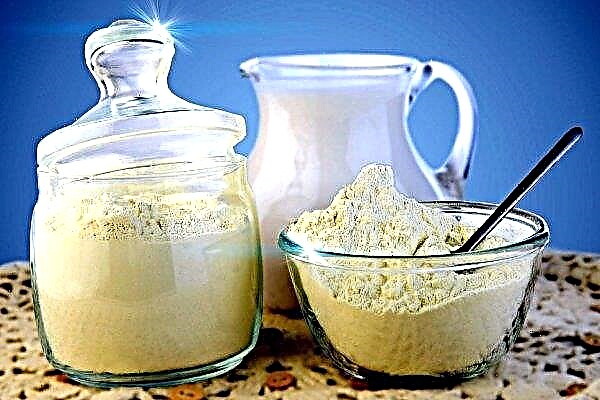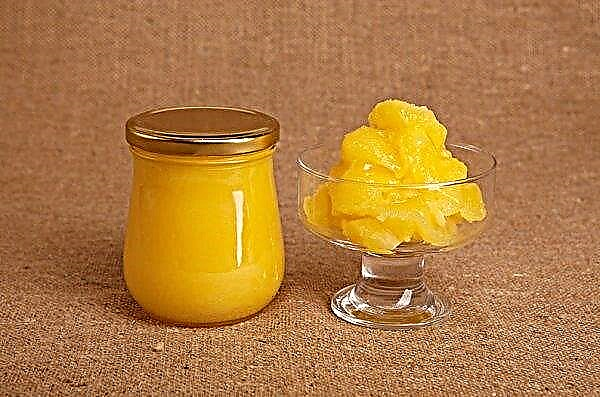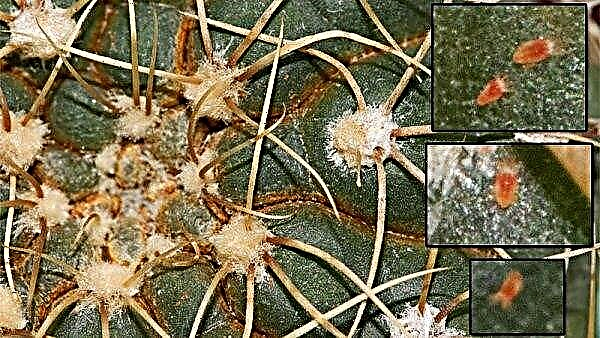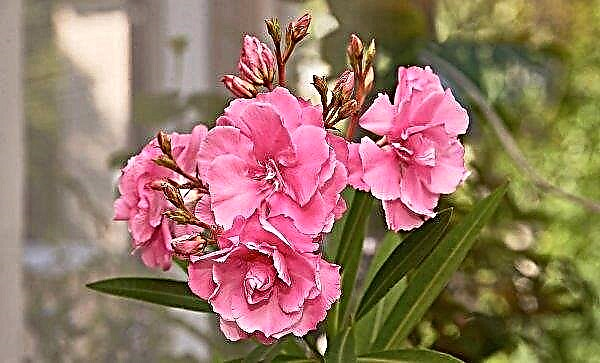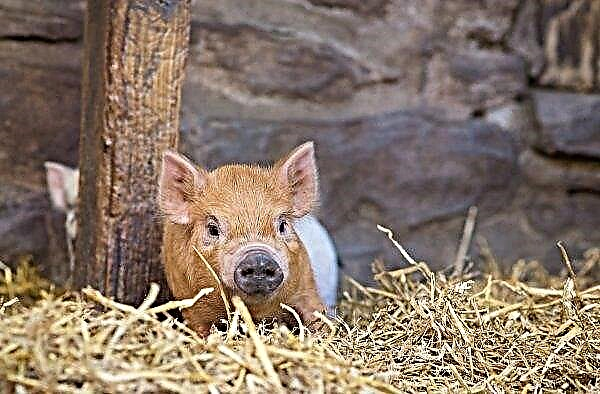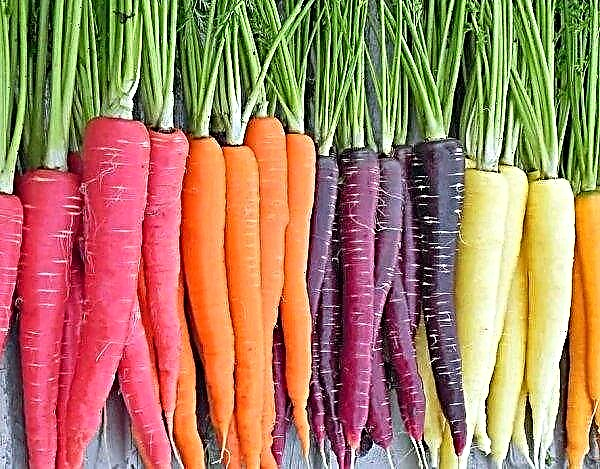Honeysuckle is a decorative shrub that allows you to create fantastic vertical landscaping. With it, you can hide the old walls, close the fences and decorate the arbors. Decorative honeysuckle first attracts the eye with very beautiful and fragrant flowers, and then with catchy berries. About one of the varieties of this plant - Hekrotta Goldflame honeysuckle - further in our material.
Description of the variety of decorative honeysuckle Hekrotta Goldflame (Goldflame)
Goldflame honeysuckle was created for landscaping. Rapid growth, an abundance of flowers, decorative fruits, alluring aroma - all this provides unlimited opportunities for design ideas.
Important! To understand whether it is possible to eat honeysuckle fruits, you need to look at the color and shape of the berries. The garden option has elongated, shiny blue berries suitable for consumption. Small honeysuckle fruits, round, dark red or black — they can’t be eaten.
Selection history
Hekrotta Goldflame, a decorative curly honeysuckle, is a hybrid variety obtained by crossbreeding with “evergreen” and “American” species.
Appearance, characteristics of creepers, flowering time
The height of the vine reaches 4 m. The berries in this variety are red. Abundant flowering of the plant occurs from June and lasts until mid-autumn (October). By the end of flowering, the intensity of the appearance of flowers decreases.
The leaves of this variety are ellipsoidal, wide, have sharp edges, reaching a length of up to 10 cm. Many tubular flowers form large inflorescences that exude a unique aroma. Hekrotta Goldflame's honeysuckle reproduces vegetatively. Frost resistance is high.
Advantages and disadvantages of the variety
- The advantages of Hekrotta Goldflame honeysuckle include:
- dense growth of foliage and an abundance of flowers;
- long flowering period;
- strong aroma;
- rapid growth of shoots (up to 80 cm per year);
- frost resistance;
- large size of flowers (up to 5 cm);
- decorativeness;
- rapid rooting during transplantation;
- resistance to diseases and pests.
- The disadvantages of this plant include:
- poisonous fruit;
- whimsicality to soil and watering;
- low drought tolerance;
- long wait for flowering;
- fruiting 3-4 years after planting;
- eventually exposing the shoots.

Agricultural technology
A decorative honeysuckle culture will decorate the site and amaze with its splendor from spring to late fall if properly cared for.
Important! The fruits of the Honeysuckle Goldflame honeysuckle are inedible. Shrubs can only be used for landscaping and landscape design, because the berries are poisonous and can lead to severe poisoning.
Seat selection
It is best to plant the plant on the south side of the house, because it grows well and blooms in sunny places, but partial shade is also allowed. With strong shading, the plant will also grow, but flowering will not be so plentiful.

Goldflame honeysuckle will not grow well on sandy and clay soils. All other types of soil are quite suitable for cultivation. However, the bush grows best on loose fertile soils with a neutral alkaline reaction and good drainage.
Landing and care
Landing is carried out in early autumn, if desired, this can be done at the end of August:
- The landing pit needs to be prepared a few weeks before landing. For a two- or three-year-old plant, it should be shallow - 30 × 30 cm, a little deeper for a more adult - 50 × 50 cm. For drainage, it is best to use broken brick. The soil mixture should contain 3 parts of turf soil, 1 part of humus, 1 part of peat.
- Before planting, 0.5 buckets of water should be poured into each pit.
- If several plants are planted, then the interval between them must be kept at 1.5–2 m.
- The roots should be straightened, set in the hole, covered with soil. Do not deepen the root collar. It must remain at ground level.
- Pour the plant 1 bucket of water, mulch with humus or compost, a layer of up to 4 cm.

It usually takes 10 days to root a plant. With the onset of spring, honeysuckle should be fed with any complex mineral product at the rate of 2 tbsp. l on 1 m² (or according to the instructions). A few days before flowering, any organic fertilizer should be applied. It is imperative to loosen the soil around the bush by 20 cm for better breathability. It is necessary to water the liana several times during the summer.
Pruning is preferable in March or after leaf fall. Formative and sanitary trimming is carried out every year, and anti-aging - every 2-3 years. When rejuvenating, cut old dry shoots. In the absence of good care, the plant may lose its attractiveness and cease to delight with fragrant flowers.

Pest and Disease Control
Diseases for the Hekrotta Goldflame variety of honeysuckle are rare. Among the most common are fungal. They can develop in conditions of high humidity. Creating the right conditions for growing plants and planting rules is the main condition under which the honeysuckle's vulnerability to infection by fungal or viral diseases is reduced to zero.
As for insect pests that threaten this culture, aphids can be distinguished among the most common.

Effective control of small harmful insects is as follows:
- luring on a site of birds (sparrows, tits, robins, hemp), for which aphids are a source of nutrition;
- luring large insects (ladybugs, lacewings) onto the site, for which aphids are food;
- planting next to the plant vegetable crops: garlic and onions, as well as flower: marigolds, chamomiles;
- extermination of anthills (ants live in symbiosis with aphids);
- timely trimming and whitewashing of honeysuckle culture.
Important! Honeysuckle should not be planted near linden, due to the frequent aphid infestation of this tree.
If the aphid has affected most of the honeysuckle plantations, then it can be removed using tobacco infusion, which the insect simply can’t tolerate. To do this, 100 g of tobacco are infused in 1 liter of water for a day, and after infusion, this mixture is boiled for 30 minutes and used for spraying.

Pruning and shaping creepers
Hekrott Goldflame's honeysuckle is not a very high vine. Its height reaches 4 m. For example, there are other varieties that curl up to 6 m in height. In early spring, it is recommended to do sanitary pruning of the plant, removing damaged, dry and frozen shoots. In addition, excess shoots are shortened to 1/3 of the length, stimulating their branching to form a beautiful crown.
Wintering
Gardeners love Hekrott Goldflame's honeysuckle because of its ability to tolerate frosts perfectly. This fact indicates that there is no need to cover the bush for the winter period. It's okay if the shoots freeze slightly, because in the new season they will quickly recover.

If the region where this crop is grown is very cold, then a creeping plant must be laid on the ground before a stable cooling, covered with a thick layer of fir branches or straw, and covered with covering material on top.
Using
The cultivation of Hekrotta Goldflame honeysuckle allows you to create not only complex landscape compositions, but also to refine the territory of personal plots.
Did you know? In the Victorian era in the UK, honeysuckle flowers were often grown in gardens and around house doors to ward off witches and evil spirits.
In landscaping
For horticulture, this honeysuckle crop is often used. Vertical gardening gives aesthetic pleasure due to the incredible beauty of the plant.

In landscape design
In landscape design, honeysuckle has been used for many years. According to the reviews and recommendations of gardeners and designers in the field of landscape design, this plant can decorate any flowerbed, forming a luxurious crown.
If you plant a plant near a house or a fence, then the shrub can grow along their walls, creating a spectacular composition next to other plants or grow independently.
Attractive and fragrant flowers of the honeysuckle of the Hekrotta Goldflame variety can definitely make this plant a valuable garden decoration.

